I’m doing a research on “Mask R-CNN for Object Detection and Segmentation”. So I have read the original research paper which presents Mask R-CNN for object detection, and also I found few implementations of Mask R-CNN, here and here (by Facebook AI research team called detectron). But they all have used coco datasets for testing.
But I’m quite a bit of confusing for training above implementations with custom data-set which has a large set of images and for each image there is a subset of masks images for marking the objects in the corresponding image.
So I’m pleasure if anyone can post useful resources or code samples for this task.
Note: My dataset has following structure,
It consists with a large number of images and for each image, there are separate image files highlighting the object as a white patch in a black image.
Here is an example image and it’s masks:
Image;
Masks;
Advertisement
Answer
I have trained https://github.com/matterport/Mask_RCNN ‘s model for instance segmentation to run on my dataset.
My assumption is that you have all the basic setup done and the model is already running with default dataset(provided in the repo) and now you want it to run for custom dataset.
Following are the steps
- You need to have all your annotations.
- All of those need to be converted to VGG Polygon schema (yes i mean polygons, even if you need bound boxes). I have added a sample VGG Polygon format at the end of this answer.
- You need to divide your custom dataset into train, test and val
- The annotation by default are looked with a filename
via_region_data.jsoninside the individual dataset folder. For eg for training images it would look attrainvia_region_data.json. You can also change it if you want. - Inside Samples folder you can find folders like Balloon, Nucleus, Shapes etc. Copy one of the folders. Preferably balloon. We will now try to modify this new folder for our custom dataset.
- Inside the copied folder, you will have a
.pyfile (for balloon it will be balloon.py), change the following variablesROOT_DIR: the absolute path where you have cloned the projectDEFAULT_LOGS_DIR: This folder will get bigger in size so change this path accordingly (if you are running your code in a low disk storage VM). It will store the.h5file as well. It will make subfolder inside the log folder with timestamp attached to it..h5files are roughly 200 – 300 MB per epoch. But guess what this log directory is Tensorboard compatible. You can pass the timestamped subfolder as--logdirargument while running tensorboard.
- This
.pyfile also has two classes – one class with suffix asConfigand another class with suffix asDataset. - In Config class override the required stuff like
NAME: a name for your project.NUM_CLASSES: it should be one more than your label class because background is also considered as one labelDETECTION_MIN_CONFIDENCE: by default 0.9 (decrease it if your training images are not of very high quality or you don’t have much training data)STEPS_PER_EPOCHetc
- In Dataset class override the following methods. All these functions are already well-commented so you can follow the comments to override according to your needs.
- load_(name_of_the_sample_project) for eg load_balloon
- load_mask (see the last of answer for a sample)
- image_reference
- train function (outside Dataset class) : if you have to change the number of epochs or learning rate etc
You can now run it directly from terminal
python samplesyour_folder_nameyour_python_file_name.py train --dataset="location_of_custom_dataset" --weights=coco
For complete information of the command line arguments for the above line you can see it as a comment at the top of this .py file.
These are the things which I could recall, I would like to add more steps as I remember. Maybe you can let me know if you are stuck at any particular step, I will elaborate that particular step.
VGG Polygon Schema
Width and Height are optional
[{
"filename": "000dfce9-f14c-4a25-89b6-226316f557f3.jpeg",
"regions": {
"0": {
"region_attributes": {
"object_name": "Cat"
},
"shape_attributes": {
"all_points_x": [75.30864197530865, 80.0925925925926, 80.0925925925926, 75.30864197530865],
"all_points_y": [11.672189112257607, 11.672189112257607, 17.72093488703078, 17.72093488703078],
"name": "polygon"
}
},
"1": {
"region_attributes": {
"object_name": "Cat"
},
"shape_attributes": {
"all_points_x": [80.40123456790124, 84.64506172839506, 84.64506172839506, 80.40123456790124],
"all_points_y": [8.114103362391036, 8.114103362391036, 12.205901974737595, 12.205901974737595],
"name": "polygon"
}
}
},
"width": 504,
"height": 495
}]
Sample load_mask function
def load_mask(self, image_id):
"""Generate instance masks for an image.
Returns:
masks: A bool array of shape [height, width, instance count] with
one mask per instance.
class_ids: a 1D array of class IDs of the instance masks.
"""
# If not your dataset image, delegate to parent class.
image_info = self.image_info[image_id]
if image_info["source"] != "name_of_your_project": //change your project name
return super(self.__class__, self).load_mask(image_id)
# Convert polygons to a bitmap mask of shape
# [height, width, instance_count]
info = self.image_info[image_id]
mask = np.zeros([info["height"], info["width"], len(info["polygons"])], dtype=np.uint8)
class_id = np.zeros([mask.shape[-1]], dtype=np.int32)
for i, p in enumerate(info["polygons"]):
# Get indexes of pixels inside the polygon and set them to 1
rr, cc = skimage.draw.polygon(p['all_points_y'], p['all_points_x'])
# print(rr.shape, cc.shape, i, np.ones([mask.shape[-1]], dtype=np.int32).shape, info['classes'][i])
class_id[i] = self.class_dict[info['classes'][i]]
mask[rr, cc, i] = 1
# Return mask, and array of class IDs of each instance. Since we have
# one class ID only, we return an array of 1s
return mask.astype(np.bool), class_id




